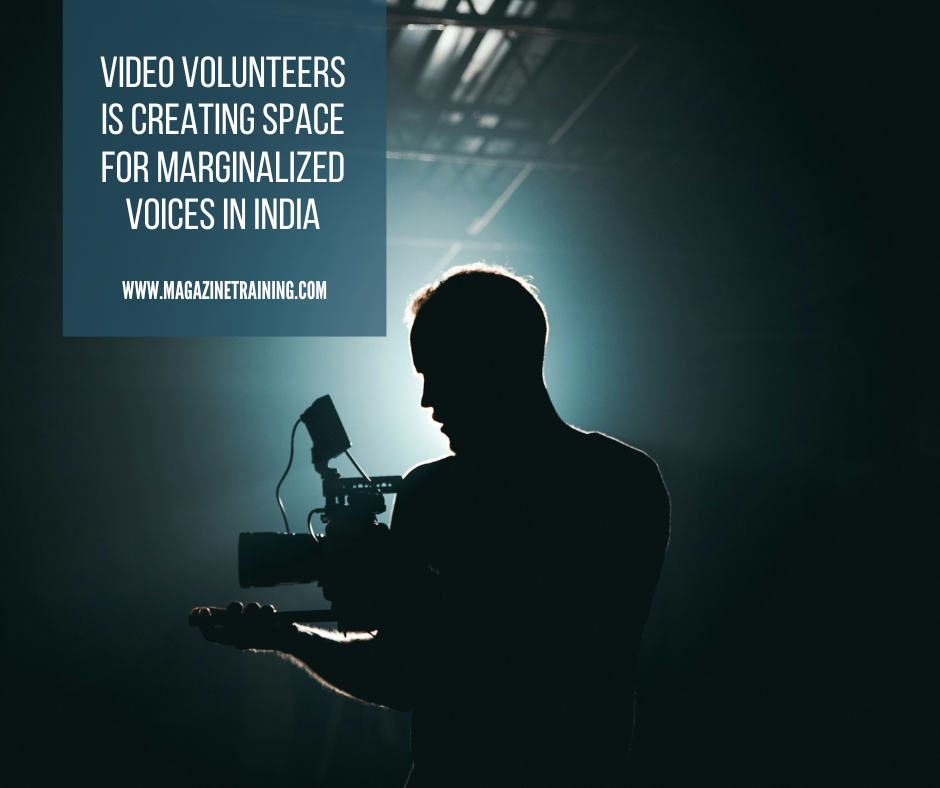
On a sweltering summer afternoon in June, Saroj Paraste shuffled between work and cooling herself off to finish editing her video report about community-led efforts that brought electricity to a remote village in the Dindori district of central India’s Madhya Pradesh state.
The video was to be submitted to her editor at Video Volunteers, a participatory media project that trains community storytellers in India to produce videos on issues affecting underprivileged groups. Paraste is one of these community storytellers, who total 200 across India today, all from underrepresented communities.
Like Paraste, who has been a contributor for almost a decade, most of the creators at Video Volunteers are not formally educated and come from the most marginalized sections of society. Almost all of them also work daily wage jobs, for instance as agricultural laborers or vegetable sellers. Paraste is herself a member of one of India’s largest tribes, the Gond, which lacks access to fundamental resources like electricity and connectivity.
“These issues used to leave me angry, and I really wanted to do something about it,” she said. “I was working with the self-help groups in the village when I learned about a newly founded organization looking for people who had knowledge about their communities and wanted to become changemakers in society,” she said. “I instantly applied to be one.”
Paraste had never used a smartphone before learning to operate a phone camera through Video Volunteers’ orientation training. She has since created over 350 videos on various issues affecting her community. These videos, she said, “would never find space or make for a news report in a mainstream news channel in India.”
Marginalized voices
India’s population of 1.4 billion people, two thirds of which live in rural areas, includes a diversity of caste, ethnic and religious minorities. These voices are rarely heard from in mainstream media coverage in the country.
“Representation of marginalized communities has been an unattended problem across newsrooms in India,” said Ruben Banerjee, a senior journalist and former editor-in-chief of Outlook magazine.
One report published by Oxfam India and media watchdog Newslaundry found that roughly nine in 10 leadership roles at English-language television channels and newspapers are held by people from upper castes. Representation from marginalized groups such as Dalits, tribal communities, and Other Backward Classes was negligible. “In Indian media, diversity of voices has still not become a priority. Neither have issues of rural India, because rural stories may not be lucrative in bringing advertisements and sponsorships for corporate-backed media outlets,” Banerjee explained.
Jessica Mayberry and Stalin K. created Video Volunteers in 2003 to serve as a news agency for the country’s marginalized communities, and to help bridge the divide between rural and urban India. Today, Video Volunteers provides extensive coverage from India’s poorest and most media-deprived regions through stories produced by individuals living below the poverty line, classified as those who earn less than half a dollar a day.
by Hanan Zaffar and Jyoti Thakur, International Journalists’ Network
Photo by KAL VISUALS on Unsplash
Related posts
Magazine Training International’s mission is to encourage, strengthen, and provide training and resources to Christian magazine publishers as they seek to build the church and reach their societies for Christ.

